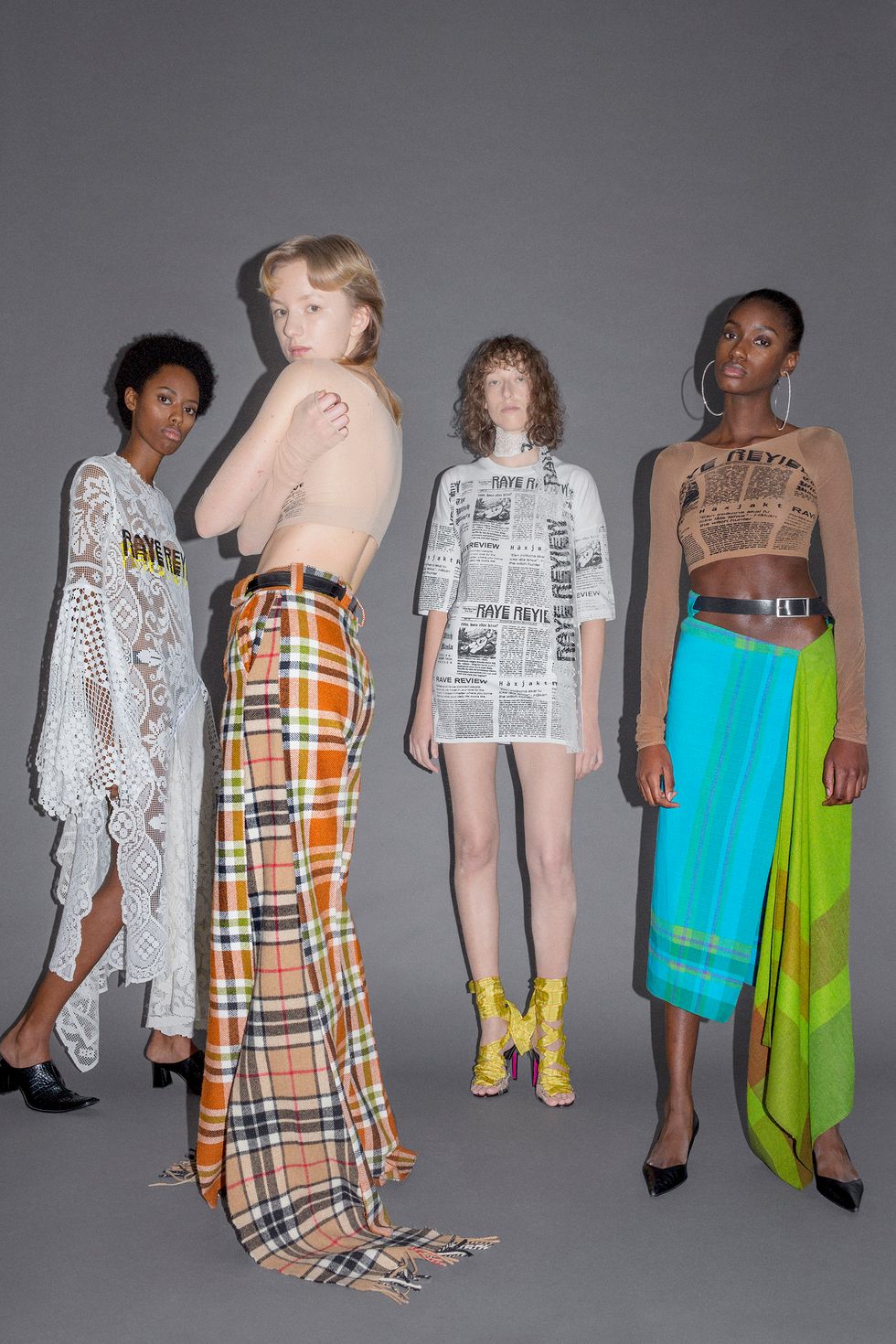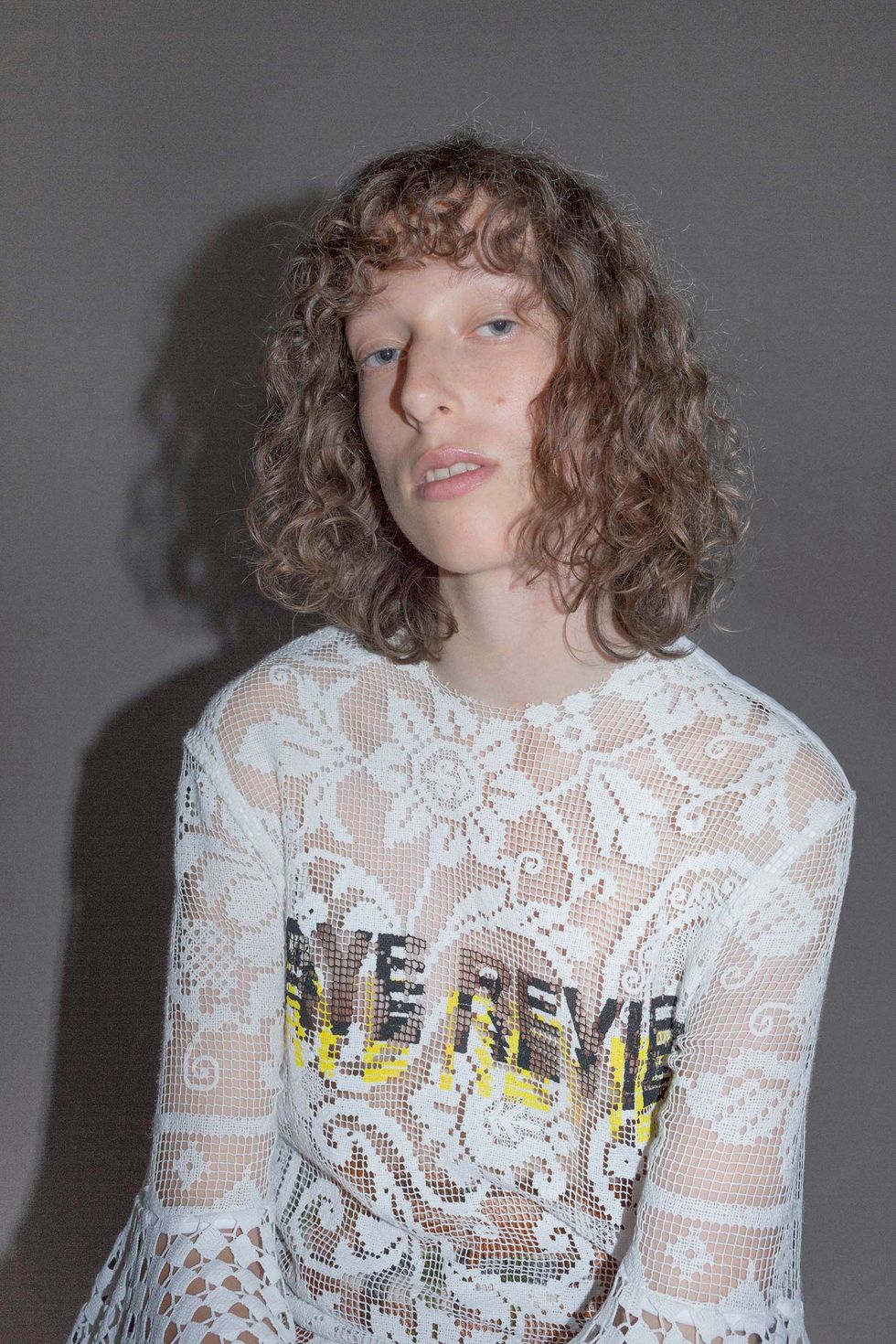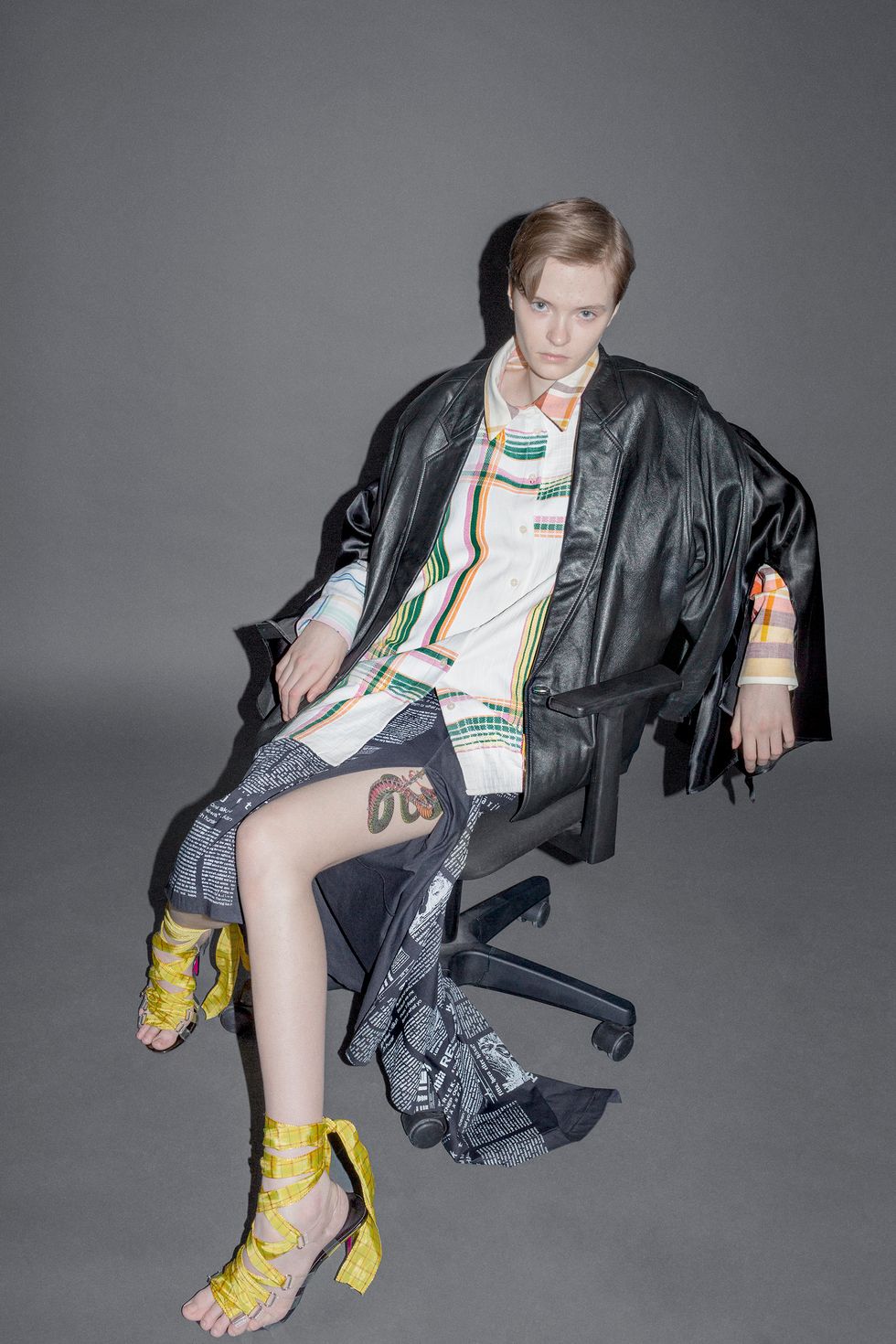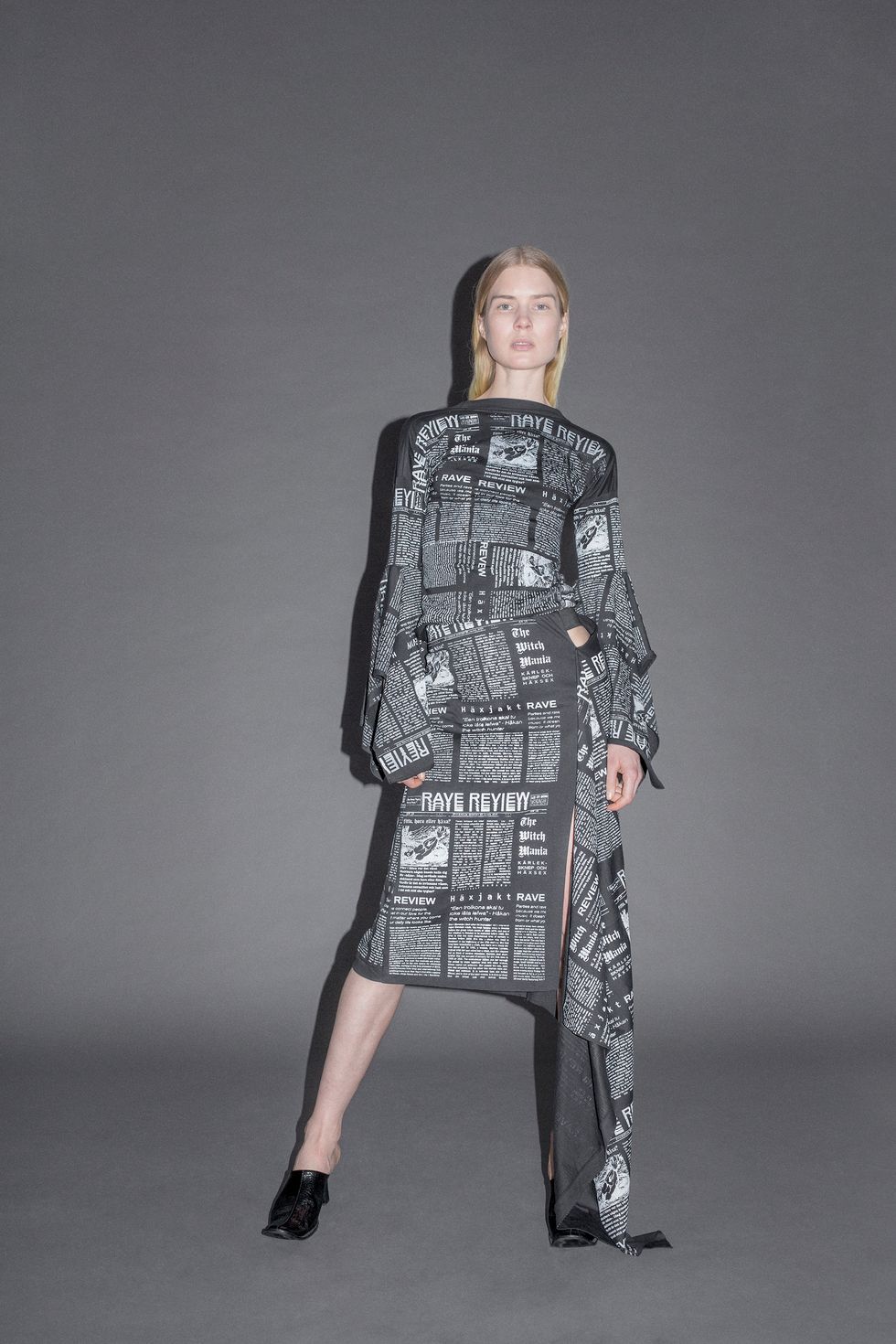
Rave Review: Be Sustainable, But Make It Fashion
Apr 09, 2018
Like any billion dollar global enterprise that involves mass production, the fashion industry has a negative impact on the environment that, thanks to new reports, has never been clearer. From retail giants like ASOS and H&M's new clothing-recycle programs, to smaller fashion upstarts made entirely with efficient processes and materials, to designer house's simple decision to go fur-free, sustainability is the new goalpost — if not the most visible one — for the industry's metrics of success.
With that mission in mind, Rave Review was founded in 2017 by design duo Josephine Bergqvist and Schück with the intention to upcycle garments into new products. While no one can reasonably argue against the necessity for more sustainable practices in fashion, the industry is loathe to sacrifice profits in favor of a good cause — in this case by possibly alienating potential customers who haven't yet been sold on the idea that sustainable and high fashion are not mutually exclusive. After launching during Paris Fashion Week Spring 2018 and executing a strong showing at Stockholm Fashion Week 2018, Bergqvist and Schück are successfully making the case that any label can be sustainable, but make it fashion.
We caught up with Rave Review to learn more about just how they do that, and why it matters:
Why did you decide to create a sustainable fashion line?
Josephine has always been interested in fashion that can change the society. I've always believed fashion is mainly about communication and how it in such a powerful way to express feelings, statements and politics. Livia always also felt an urge to apposite fashion in a new more environmentally friendly way. We both shared the same vision for fashion and sustainability. Since we felt there was a gap in the market between high end fashion and remake, we came up with the concept of the Rave Review - to make clothes with high end finish entirely made out of already existing textiles and clothes.
Where do you source your materials?
For the last couple of collections we have mainly been sourcing materials in different second hand shop and markets. We are also buying a lot online from old ladies. Some of them has probably been collecting these beautiful home textiles for decades. In the future we will work with bigger collecting companies and antique dealers abroad to find our materials. We're interested in materials that gives a familiar or nostalgic feeling. Fabrics you maybe have seen at someone's home more likely than in a fashion context. We've used a lot of natural fibers like wool, linen and cotton and also leather - all these materials are good to reuse and tend to get even more beautiful with age.
What are some of the challenges of using upcycled or recycled garments?
One challenge is when we find materials we really like to work with, they can be difficult to source in a larger scale. The uniqueness of the garments is one of our strengths but the biggest challenge since the retail and fashion industry is becoming more online based. We have a new-thinking business concept and it's sometimes hard to fit in the old fashion system, all though most people believes it has to come to a change and the industry has to adapt.
Even as it gains popularity (and the need for it increases), there's almost a stigma around sustainability — that it's not "sexy" or high fashion. What do you think can change that perception?
We think it's because of the same reason we first started the Rave Review - the lack of contemporary and progressive sustainable brands on the market. It's important when working with sustainability in design, that it doesn't have to define the brand or product aesthetically. We really believe working in this direction is the future. But in the end of the day, people will not buy things entirely because they are sustainable, you desire a garments because it's cool and fashionable.
The inspiration for you Fall 2018 collection was witches. Where did that come from?
We were going to Ukraine for New Years, at the same time as we were doing research and sourcing for the AW18 collection. In Ukraine we found a lot of nice interior textiles such as checkered table cloths, rugs and heavy cotton laces. These materials resemble of the stereotypical clothing of witches that we know from movies and fairytales. For us the witch theme stands for feminism — being powerful and mysterious, sexual and provocative.
What's your vision for the label going forward?
The bigger vision is to move the fashion industry forward by showing the possibility to combine recycling and high end fashion. At the moment we're focusing on how to scale up the production, find the best sourcing partners and becoming a part of the international fashion scene. Since the uniqueness is important for us, most part of the garments in the collation are numbered. To close the loop of being sustainable we will also offer a leasing closet where you can lease the garments for a period of time.
Photography: Märta Thisner
Styling: Nicole Walker
Make up: Josefina Zarmén
Hair: Joanna Rask
Models: Elsa Sylvan, Nina Kihlberg, Amie & Izabell and Jonna & Yeti
MORE ON PAPER
Entertainment
Rami Malek Is Certifiably Unserious
Story by Joan Summers / Photography by Adam Powell
Story by Joan Summers / Photography by Adam Powell
14 November
Music
Janelle Monáe, HalloQueen
Story by Ivan Guzman / Photography by Pol Kurucz/ Styling by Alexandra Mandelkorn/ Hair by Nikki Nelms/ Makeup by Sasha Glasser/ Nails by Juan Alvear/ Set design by Krystall Schott
Story by Ivan Guzman / Photography by Pol Kurucz/ Styling by Alexandra Mandelkorn/ Hair by Nikki Nelms/ Makeup by Sasha Glasser/ Nails by Juan Alvear/ Set design by Krystall Schott
27 October
Music
You Don’t Move Cardi B
Story by Erica Campbell / Photography by Jora Frantzis / Styling by Kollin Carter/ Hair by Tokyo Stylez/ Makeup by Erika LaPearl/ Nails by Coca Nguyen/ Set design by Allegra Peyton
Story by Erica Campbell / Photography by Jora Frantzis / Styling by Kollin Carter/ Hair by Tokyo Stylez/ Makeup by Erika LaPearl/ Nails by Coca Nguyen/ Set design by Allegra Peyton
14 October
Entertainment
Matthew McConaughey Found His Rhythm
Story by Joan Summers / Photography by Greg Swales / Styling by Angelina Cantu / Grooming by Kara Yoshimoto Bua
Story by Joan Summers / Photography by Greg Swales / Styling by Angelina Cantu / Grooming by Kara Yoshimoto Bua
30 September
Music
Demi Lovato Is No Joke
Story by Ivan Guzman / Photography by Jason Renaud / Styling by Chris Horan/ Makeup by Loftjet / Set design by Allegra Peyton
Story by Ivan Guzman / Photography by Jason Renaud / Styling by Chris Horan/ Makeup by Loftjet / Set design by Allegra Peyton
15 September

















